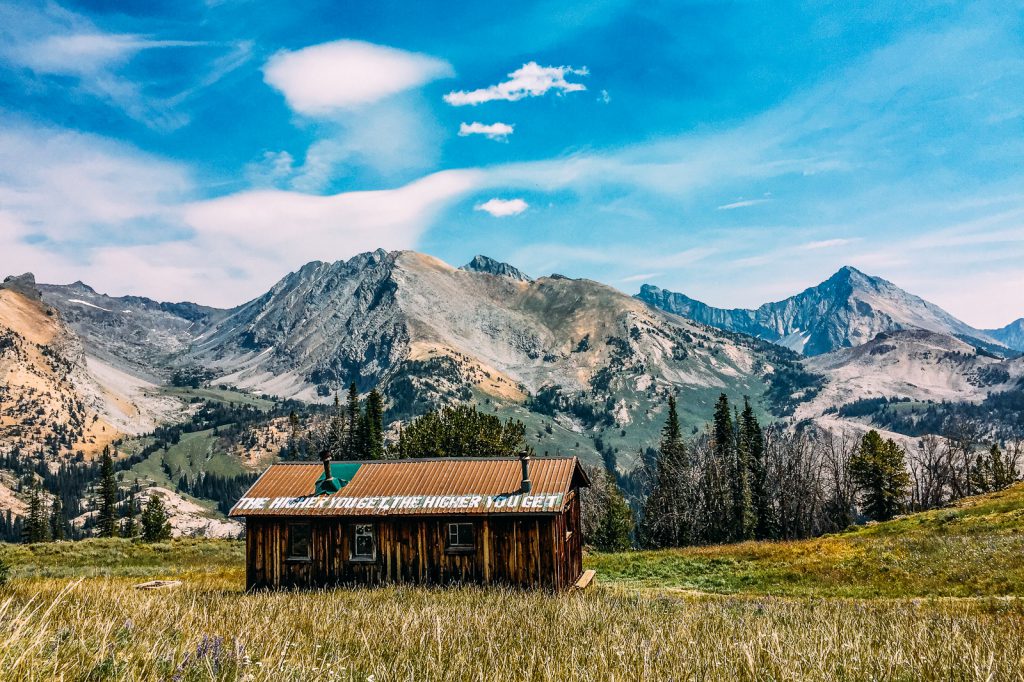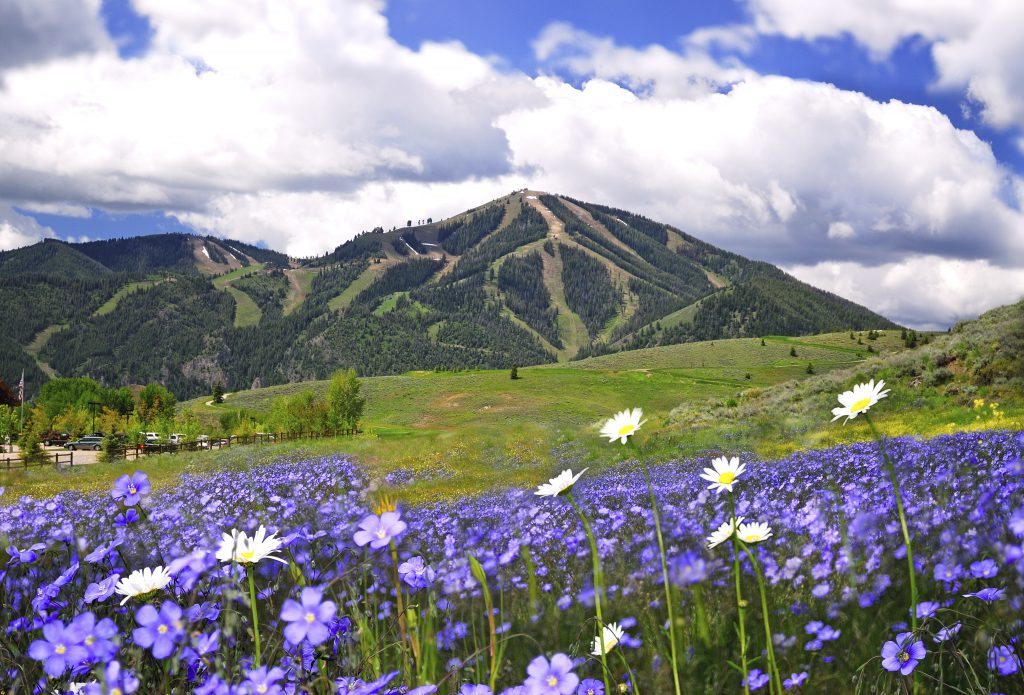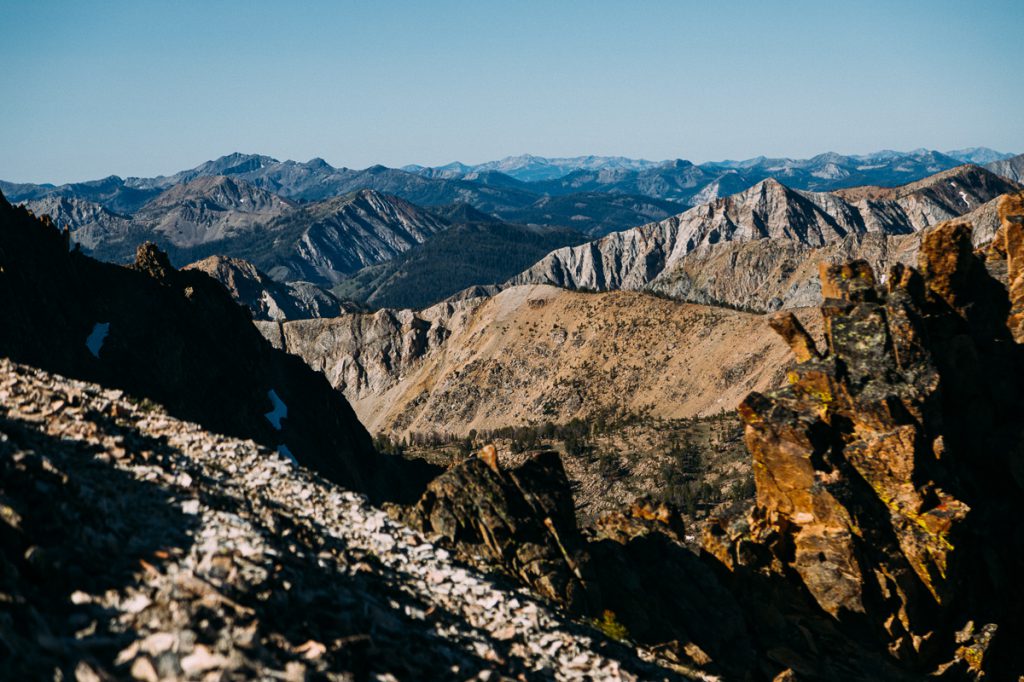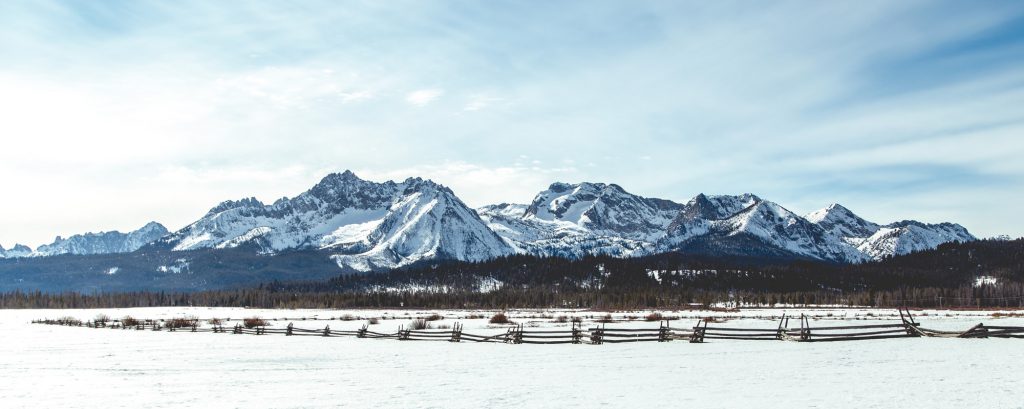Mountain ranges around Sun Valley: Although many people proclaim that “The Sawtooths are simply breathtaking!” and they aren’t wrong about that, chances are they are not looking at the Sawtooths. Although much of the mountains surrounding Sun Valley are within the Sawtooth National Forest, it is actually impossible to see the Sawtooths from the valley. Sun Valley is actually surrounded by five distinct mountain ranges so we compiled some helpful info so that the next time your talking peaks, you sound like a local.

Pioneer Mountains
The great Pioneers! Idaho’s second tallest mountain range and the beautiful skyline viewed from most of the ski runs. The Pioneers rise to the east out of the valley with foothills mostly blocking the view from town, but making it more rewarding to hike into Pioneer Cabin. The range is bounded on the west by the Big Wood River, by Trail Creek, Summit Creek, and the North Fork Big Lost River on the north, and by the East Fork Big Lost River, Saint Louis Canyon, Champagne Creek, and the Cherry Creeks on the east, and on the south by the Snake River Plain. Hyndman Peak is the ninth tallest peak in Idaho earning it the last slot on the list of nine peaks over 12,000 ft. in elevation.
Notable Peaks:
- Hyndman Peak 12,009 ft.
- Standhope Peak 11,878 ft.
- Devil’s Bedstead 11,864 ft.
Boulder Mountains
Just to the north of the Pioneer Mountains are the Boulder Mountains. The backdrop to Clint Eastwood’s Pale Rider and largely within the Hemingway–Boulders Wilderness and the Sawtooth National Recreation Area. The Boulders are much more visible with the front of the Boulder Mountains close to, and clearly visible from, State Highway 75, the Sawtooth Scenic Byway. The Boulders stretch north from Trail Creek up to Pole Creek and Germania Creek and from the Big Wood River on the west to Twin Bridges Creek on the east. The Boulders offer some great mountain goat viewing, hikes, and picturesque opportunities.
Notable peaks:
- Ryan Peak 11,713 ft.
- Glassford Peak 11,601 ft.
- Easley Peak 11,108 ft.

Smoky Mountains
The Smoky Mountains were named from the frequent forest fires in the mountains. In 2007 the Castle Rock Fire burned 48,000 acres and in 2013 the Beaver Creek Fire burnt 114,900 acres of the Smoky Mountains. Although threatening in the moment, backcountry skiers have come to rejoice from mother natures natural cycle of cleaning house and the gladed skiing that the fires opened up. The Smoky’s also host the crown jewel of Sun Valley, Bald Mountain. Also within the Sawtooth National Forest, and partly within the Sawtooth National Recreation Area, the Smoky’s are not quite the Sawtooths yet. The Smoky’s are all of the mountains west of the valley reaching all the way over to the Soldier and Salmon River Mountains on the west, the Camas Prairie on the south, and the Sawtooths on the north.
Notable peaks:
- Bald Mountain 9,150 ft.
- Saviers Peak 10,440 ft.
- Norton Peak 10,335 ft.

White Cloud Mountains
Although not even remotely visible from the 9-hole course at Sun Valley that carries its namesake, the White Cloud Mountains hold some of the most dramatic peaks in the area. Similar to the Pioneers, with foothills blocking most of the views, the White Clouds are best experienced from the trails. The White Clouds rising southeast of Stanley are located within the Sawtooth National Recreation Area and partially within the Cecil D. Andrus–White Clouds Wilderness. Continuing north from where the Boulders left off at Pole Creek, the White Clouds are bound on the west and north by the mighty Salmon River and the east by the East Fork of the Salmon.
Notable Peaks:
- Castle Peak 11,814 ft.
- Fourth of July Peak 10,712 ft.
- Washington Peak 10,518 ft.

Sawtooths
Finally the majestic Sawtooth Range. The mountains were named for their jagged peaks resembling those of an old hand saw. Encompassing an area of 678 square miles much of the mountain range is within the Sawtooth Wilderness area, part of the Sawtooth National Recreation Area and Sawtooth National Forest. Yet not the tallest range in Idaho, there are 57 peaks with an elevation over 10,000 feet in the Sawtooth Range and over 450 lakes. Six of the largest lakes in the range are Redfish, Alturas, Pettit, Yellow Belly, Sawtooth, and Stanley lakes. The batholith that rose up from the earths crust and was carved by glaciers has made the Sawtooths not only picture perfect but also an other worldly experience to explore. Its easy to see why so much in the region is named after them and why so many get them confused.
Notable Peaks:
- Thompson Peak 10,751 ft.
- El Capitan 9,902 ft.
- McGown Peak 9,859 ft.
Just a quick recap of what these 5 mountain ranges hold: three Wilderness Areas, one National Recreation Area, numerous National Forests, The headwaters to seven of Idaho’s most notable rivers, hundreds of towering peaks, and thousands of miles of trails all ripe for exploring. Oh and don’t forget the much of these are all included in the Central Idaho Dark Sky Reserve as if you needed another reason to visit.